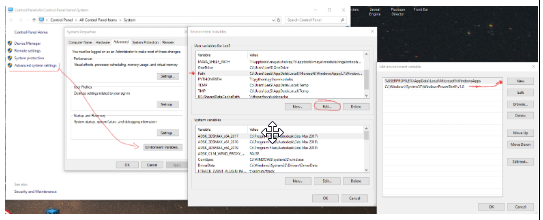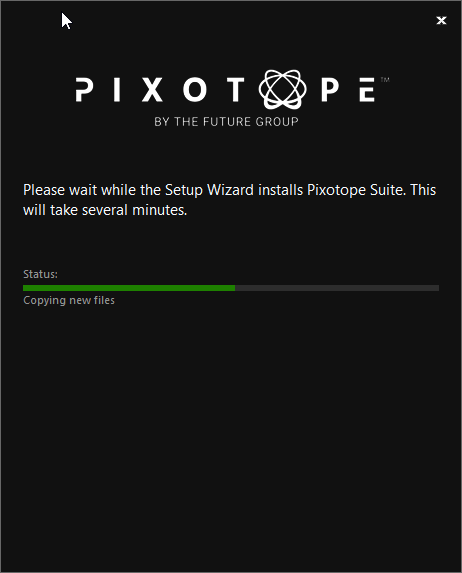1.5 | Installing Pixotope
Hardware and software setup
System setup
Check out the hardware and software requirements before starting the installation.
Recommendations
- Have the latest Windows updates installed
- Pause updates while you are in production (you can pause updates for a specified period of time in the Windows Update settings)
Disable the Windows game bar - https://www.windowscentral.com/how-disable-and-remove-game-bar-windows-10-creators-update
Disable any third-party program that adds any overlay
Do not install any tweaking or overclocking programs
Clean-install the Nvidia display drivers without Geforce Experience - Nvidia driver installation
For performance-critical setups: Make sure your hardware has sufficient cooling, since CPUs/GPUs start thermal throttling around 85-90 degrees, which will cause stuttering and hitching
Network setup
We recommend using static IPs in a production environment. You can, however, also use DHCP.
An internet connection is required for initial activation of the license and for Online license mode.
Learn more about license modes.
Ports used by Pixotope
- 443 (internet) - License activation on https://prod.tfg.cloud/
- 4200 (local) - Pixotope Director API
- 5105 (local) - Data hub (prior to 1.1.1: 5005)
- 6789 (local) - Used for autodiscovery
- 8567 (local) - Tracking Server to Editor
- 27618 (local) - Pixotope Video Pipeline
Port conflicts
In the event of a port conflict, we recommend that you stop any processes that are blocking the ports used by Pixotope.
To check which processes are using the port:
- Open Resource Monitor → Network tab → Listening Ports
For advanced users
The ports 4200 and 5105 can be changed.
Changing ports
- Open the following file in Notepad:
The Future Group\Pixotope Suite\Pixotope Director\resources\app.asar.unpacked\assets\production.json
- Find and replace all occurrences of the port concerned
- Do not change anything else!
- Save the file
- Restart Director
NB: This change must be made for every new install of Pixotope.
Add the following system path to the environment variable PATH:
C:\Windows\System32\WindowsPowerShell\v1.0

If you have any problems running Data hub or accessing other Pixotope workstations in the network, make sure you have:
- disabled the Windows firewall
- set the network profile to private
- shut down any system optimizers or any software that manipulates the data flow
- check the installation path for non-ascii characters (see the Language support section below)
Language support
Pixotope supports the usage and displaying of characters for most languages out of the box.
For full support of Chinese, Japanese or Korean characters (for display or in file/installation paths) the following Windows setting needs to be enabled:
- Go to Windows Settings → Time & Language → Language → Related settings: Administrative language settings → Change system locale...
- Enable “Beta: Use Unicode UTF-8 for worldwide language support”
Downloading software
Download Pixotope from the Pixotope Cloud - Pixotope Cloud.
Running the installer
Run the Pixotope installer.
Windows User Account Control
Windows User Account Control might ask you for permission to make changes to your device. This is for the installation of Redis.
Selecting features to install
By default, the Pixotope installation includes the installation of Pixotope Director, Pixotope Editor and Redis. Depending on the licenses you have been assigned, some components might not be available to you.
Deselect "Demo Projects" to omit them from the installation. For first-time users, however, it is recommended to install them.
Selecting an installation folder
By default, Pixotope Suite will be installed in the folder:
C:\The Future Group\Pixotope Suite\
Do not install in the “Program Files” or “Program Files (x86)” folder.
Advanced: Pixotope uses the default user data location under the directory C:\User\AppData\Roaming\The Future Group\
Selecting the default projects folder
By default, Pixotope Suite will set the projects folder to be:
C:\The Future Group\Pixotope Suite\Demo Projects
You can easily add more project folders later from inside the Director.
In multi-machine setups, the current project folder has to have the same local path on all machines.
For file paths with non-ascii characters see the Language support section above
Starting the installation
This will take several minutes. Please make sure that you do not interrupt the process.

Installing Redis
Redis is an open-source (BSD-licensed), in-memory data structure store, used as a database, cache and message broker. The Pixotope Suite package includes the installation of Redis.
The Redis installation wizard will be automatically started during the Pixotope Suite installation process, if Redis is not already installed.
Click through the installation and keep all default settings.
Start Director
Continue to Start up Director.